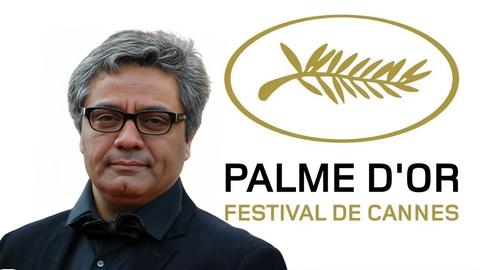One photograph shows a woman with her hair falling down on to her shoulders, and another is of a woman with her hair bundled on top of her head. One woman wears a large pair of earrings , and another sports a knitted cap over her long hair. Almost all of them are smiling.
Next to these are another set of photographs: The same people, but looking very different. The smiles are gone, and so are the individual hair styles. The second set of photographs are reproductions of the Iranian national identity cards that each and every adult Iranian citizen possesses.
In October, a 23-year old woman launched a campaign challenging the ID card photographs — and particularly women’s ID cards. Using the hashtag #kartmelichallenge on Instagram, the campaign invites Iranians to send in two photographs — one from their ID card and the other as they are in real life. Women are encouraged to send in any photo they feel represents how they really are.
The administrator of the Instagram campaign, who wants to remain anonymous, first started posting photographs of women wearing both hejab and with their heads uncovered — just as the My Stealthy Freedom Facebook page has been doing for about 18 months now. After posting a few photographs, the campaigner decided to explore another theme: The National ID card, and how it compares with photographs of real life.
“It’s rare for people to be happy with his or her photograph on their ID card,” she told IranWire, “and this is what makes the campaign interesting.” The first photographs she posted were of her friend, and she then invited others to send in their photographs too. “Every day, more than 20 people send in pictures,” she said. Priority is given to the photograph pairs that are markedly different from one other.
In just a few weeks, the Instagram page attracted more than 2,200 followers and its photographs have been shared on various social networks. Typically, each photograph attracts hundreds of comments. “People seem to approve more of those photographs showing people looking plain and simple,” said the administrator. “Those women wearing heavy makeup or who have had cosmetic surgery are criticized more often.”
Sahar is one woman who posted her photographs to the page. She said she was absolutely not happy about how she looks on her ID card. “This picture does not look like me in any way,” she told IranWire. “But any time I mention this, my brother laughs out loud and says, ‘on the contrary, this is the real you because it has not been retouched.’” But Sahar disagrees. “On the national IDs, the faces are elongated, vertically or horizontally, and they look very different from the real person.” Others agreed with this assessment, saying people’s faces are wrongly proportioned on ID card photographs. But, they say, there is nothing they can do about it. They must just live with it.
No Ties, No Makeup, No Jewelry, No...
The Iranian General Registry Offices website specifies that photographs for national identity cards must be taken against a lightly-colored background and be six by four centimeters in size. The photograph must be recent. However, the “Police + 10” site, which actually processes the necessary documentation for issuing the cards, has a much more stringent set of requirements. Men “must not wear ties, sunglasses or jewelry. Their hair must not be overly styled and their foreheads and ears must be clearly visible.” Women must appear “in full hejab without makeup or jewelry."
Hamid has been a photographer at a photography studio for several years. Taking photographs for ID cards is one of his jobs. “By ‘full hejab,’ they mean that the hair is completely covered and the hejab must also cover part of the forehead and the throat below the chin,” he said. He knows straight away what photographs will be acceptable to the General Registry Office. “We are experienced. Passport photos cannot be retouched in any way,” he said. “You can retouch photos for the national ID card a little, but if it's Photoshopped too much, it will be rejected.”
“Many customers know very well what the office will find objectionable,” Hamid said. “They do not want to risk it and then have to come back and pay for another session. Most women arrive to have their ID card photographs taken not wearing makeup and with their headscarves tied tightly. Some even ask us for safety pins to make sure that the hejab is tight enough and emphasize that they do not want the photograph to be retouched.”
But Hamid said his studio also serves a different group of customers. “Some of the clients who come here for visas or Western residency permit lotteries are quite identifiable,” he said, laughing. “They are very sensitive about their pictures. Sometimes they look at the photo on the camera’s display and if they don’t like it, they ask for another one.”
Like the My Stealthy Freedoms campaign, the #kartmelichallenge is a welcome opportunity for people to express themselves in a very simple but important way. It is a chance to make a statement about who they really are, something the ID cards they carry with them cannot do.
Related articles:
The "I Love Hejab" Instagram Campaign
“Police Must Enforce Good Hejab”
visit the accountability section
In this section of Iran Wire, you can contact the officials and launch your campaign for various problems



























comments